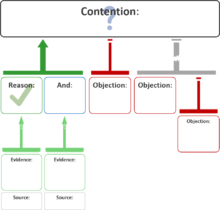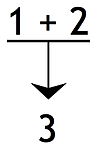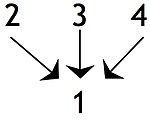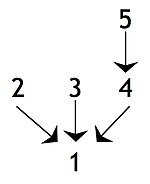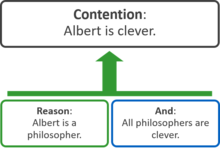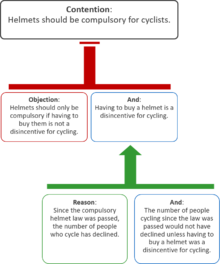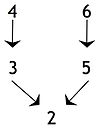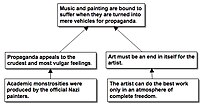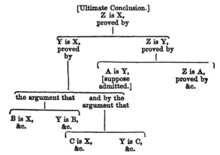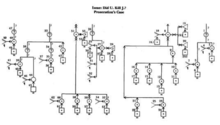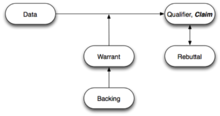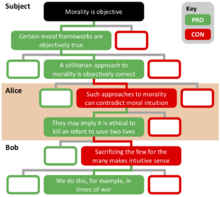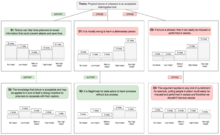Ad hominem, short for argumentum ad hominem, refers to several types of arguments that are fallacious. Typically this term refers to a rhetorical strategy where the speaker attacks the character, motive, or some other attribute of the person making an argument rather than attacking the substance of the argument itself. This avoids genuine debate by creating a personal attack as a diversion often using a totally irrelevant, but often highly charged attribute of the opponent's character or background. The most common form of this fallacy is "A" makes a claim of "fact," to which "B" asserts that "A" has a personal trait, quality or physical attribute that is repugnant thereby going entirely off-topic, and hence "B" concludes that "A" has their "fact" wrong - without ever addressing the point of the debate. Many contemporary politicians routinely use ad hominem attacks, which can be encapsulated to a derogatory nickname for a political opponent.

A false dilemma, also referred to as false dichotomy or false binary, is an informal fallacy based on a premise that erroneously limits what options are available. The source of the fallacy lies not in an invalid form of inference but in a false premise. This premise has the form of a disjunctive claim: it asserts that one among a number of alternatives must be true. This disjunction is problematic because it oversimplifies the choice by excluding viable alternatives, presenting the viewer with only two absolute choices when in fact, there could be many.

A fallacy is the use of invalid or otherwise faulty reasoning in the construction of an argument that may appear to be well-reasoned if unnoticed. The term was introduced in the Western intellectual tradition by the Aristotelian De Sophisticis Elenchis.
Deductive reasoning is the process of drawing valid inferences. An inference is valid if its conclusion follows logically from its premises, meaning that it is impossible for the premises to be true and the conclusion to be false.

Logical reasoning is a mental activity that aims to arrive at a conclusion in a rigorous way. It happens in the form of inferences or arguments by starting from a set of premises and reasoning to a conclusion supported by these premises. The premises and the conclusion are propositions, i.e. true or false claims about what is the case. Together, they form an argument. Logical reasoning is norm-governed in the sense that it aims to formulate correct arguments that any rational person would find convincing. The main discipline studying logical reasoning is logic.
In philosophy, practical reason is the use of reason to decide how to act. It contrasts with theoretical reason, often called speculative reason, the use of reason to decide what to follow. For example, agents use practical reason to decide whether to build a telescope, but theoretical reason to decide which of two theories of light and optics is the best.

Argumentation theory is the interdisciplinary study of how conclusions can be supported or undermined by premises through logical reasoning. With historical origins in logic, dialectic, and rhetoric, argumentation theory includes the arts and sciences of civil debate, dialogue, conversation, and persuasion. It studies rules of inference, logic, and procedural rules in both artificial and real-world settings.

Stephen Edelston Toulmin was a British philosopher, author, and educator. Influenced by Ludwig Wittgenstein, Toulmin devoted his works to the analysis of moral reasoning. Throughout his writings, he sought to develop practical arguments which can be used effectively in evaluating the ethics behind moral issues. His works were later found useful in the field of rhetoric for analyzing rhetorical arguments. The Toulmin model of argumentation, a diagram containing six interrelated components used for analyzing arguments, and published in his 1958 book The Uses of Argument, was considered his most influential work, particularly in the field of rhetoric and communication, and in computer science.
Douglas Neil Walton was a Canadian academic and author, known for his books and papers on argumentation, logical fallacies and informal logic. He was a Distinguished Research Fellow of the Centre for Research in Reasoning, Argumentation, and Rhetoric (CRRAR) at the University of Windsor, Ontario, Canada, and before that (2008–2014), he held the Assumption Chair of Argumentation Studies at the University of Windsor. Walton's work has been used to better prepare legal arguments and to help develop artificial intelligence.
Appeal to the stone, also known as argumentum ad lapidem, is a logical fallacy that dismisses an argument as untrue or absurd. The dismissal is made by stating or reiterating that the argument is absurd, without providing further argumentation. This theory is closely tied to proof by assertion due to the lack of evidence behind the statement and its attempt to persuade without providing any evidence.
An argument is a series of sentences, statements, or propositions some of which are called premises and one is the conclusion. The purpose of an argument is to give reasons for one's conclusion via justification, explanation, and/or persuasion.

Informal logic encompasses the principles of logic and logical thought outside of a formal setting. However, the precise definition of "informal logic" is a matter of some dispute. Ralph H. Johnson and J. Anthony Blair define informal logic as "a branch of logic whose task is to develop non-formal standards, criteria, procedures for the analysis, interpretation, evaluation, criticism and construction of argumentation." This definition reflects what had been implicit in their practice and what others were doing in their informal logic texts.

The issue-based information system (IBIS) is an argumentation-based approach to clarifying wicked problems—complex, ill-defined problems that involve multiple stakeholders. Diagrammatic visualization using IBIS notation is often called issue mapping.

Compendium is a computer program and social science tool that facilitates the mapping and management of ideas and arguments. The software provides a visual environment that allows people to structure and record collaboration as they discuss and work through wicked problems.

Araucaria is an argument mapping software tool developed in 2001 by Chris Reed and Glenn Rowe, in the Argumentation Research Group at the School of Computing in the University of Dundee, Scotland. It is designed to visually represent arguments through diagrams that can be used for analysis and stored in Argument Markup Language (AML), based on XML. As free software, it is available under the GNU General Public License and may be downloaded for free on the internet.

Logic is the study of correct reasoning. It includes both formal and informal logic. Formal logic is the study of deductively valid inferences or logical truths. It examines how conclusions follow from premises due to the structure of arguments alone, independent of their topic and content. Informal logic is associated with informal fallacies, critical thinking, and argumentation theory. It examines arguments expressed in natural language while formal logic uses formal language. When used as a countable noun, the term "a logic" refers to a logical formal system that articulates a proof system. Logic plays a central role in many fields, such as philosophy, mathematics, computer science, and linguistics.
In argumentation theory, an argumentation scheme or argument scheme is a template that represents a common type of argument used in ordinary conversation. Many different argumentation schemes have been identified. Each one has a name and presents a type of connection between premises and a conclusion in an argument, and this connection is expressed as a rule of inference. Argumentation schemes can include inferences based on different types of reasoning—deductive, inductive, abductive, probabilistic, etc.

Kialo is an online structured debate platform with argument maps in the form of debate trees. It is a collaborative reasoning tool for thoughtful discussion, understanding different points of view, and collaborative decision-making, showing arguments for and against claims underneath user-submitted theses or questions.

Argüman is a free and open source software for collective structured argumentation and argument analysis via argumentation graphs or argument maps in which the type of connections can be specified. It allows users to create collaborative "semantic maps" of arguments in well structured tree formats and share them with an audience and potential participants. Arguman.org was an open structured social debate platform that implemented the software. It is down as of 2023. There also is a mobile version of the tool. The project was started, in 2014, and largely built by developers in Turkey.
